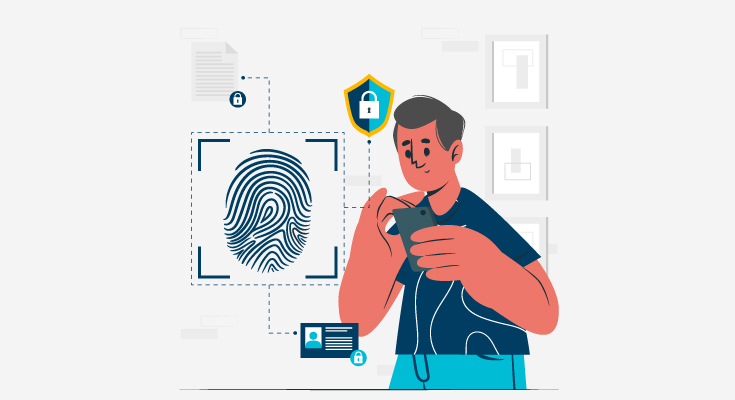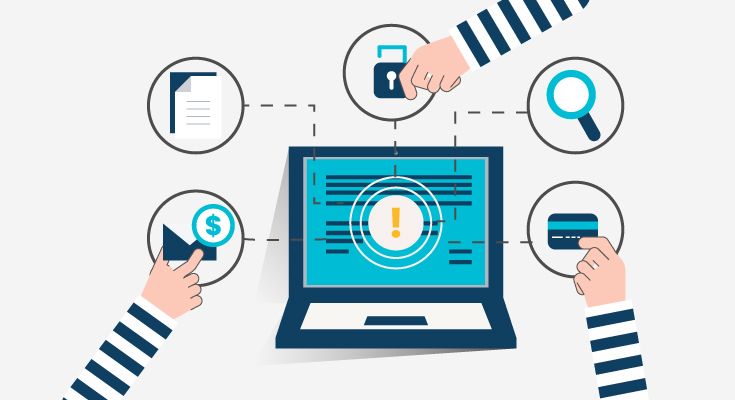As more and more online activities are growing, keeping our online identity, private data, and ID verification has grown vital. Unfortunately, not all banks and financial institutions know everything there is to know about Digital identity verification.
Digital ID verification is crucial in all kinds of online business operations. Knowing who your customer is before the onboarding process can minimize the risks of financial crime. There are a lot of things that are to be known about Digital ID verification that most people don’t.
What Is Digital Identity Verification?
The digital era has given birth to online identities and electronic documents. Same as physical documents, these online identities require online identity verification methods. An online document can be almost anything, a government-issued ID, online driver’s license, student records, bank account holder information, or more. The use of technology to make sure these electronic documents are authentic is known as online user identity verification.
There are countless identity verification solutions out there but the best online identity verification methods verify electronic documents to verify identity.
Things to Know About Digital ID Verification Service
1. Implement Facial Recognition Wherever Possible
Technology is an ever-evolving factor, it’s growing at an incredible speed and the smartphone in our pocket is a technology that can offer multiple benefits. It provides a facial recognition technology that wouldn’t have been even possible a few years ago.
Facial recognition technology is already being applied to catch criminals, log in to campus and so much more. Governments and other organizations are making use of facial recognition software. The technology uses a lot of sophisticated algorithms which scan your face and identify your facial biometrics.
While there is a long debate on the regulation of the technology, the simplification, and usefulness of facial recognition technology state that you’ll be seeing more of the technology in the future.
The first thing that you need to know about digital ID verification is that modern digital identity verification is not as secure as you would want it to be. If banks and financial institutions could apply special-grade facial recognition in their KYC compliance process, the risk of financial fraud would drop by a lot. The use of facial recognition can make identity verification solutions more effective and less capital-consuming.
2. Digital ID Verification is Crucial to Mitigate Identity Theft
In this digital world, identities are one of the most common targets for criminals. If you want to reduce fraud fight identity fraud and combat identity theft, websites and companies are using real-time ID verification to make sure that customers are who they really are. Simply put, identity verification is growing at an alarming pace as identity theft is the favorite crime for cyber attackers.
The good news is that digital identity verification solutions that are available online can allow banks, financial institutions, governments, and other organizations to fight identity theft. One of the ways to fight ID theft is by verifying documents and DIRO document verification service can help you verify original documents whenever you want.
The second thing that you should know about digital Identity verification is that verifying a physical person in the verification process is the ideal way to fight identity theft.
3. Acquiring a Bank Account Will be Easier With Document Verification Technology
Opening a personal and business account is a tough thing to do, KYC compliance can be a painful process for customers. KYC compliance requirements take an average of 24 days to complete. That whole process is frustrating enough, and to make matters worse, some banks don’t even share your KYC information between internal departments, which results in repeated requests for the same documents over and over again.
Although, things seem to be changing for the customers as smart KYC systems are slowly growing. DIRO document verification technology helps improve the overall KYC and AML compliance process by verifying original documents in under 60 seconds.
The third thing you need to know about digital identity verification is that it is more than just convenience. Document verification solutions like DIRO could save organizations a lot of money.
4. Digital ID Verification Reduces the Risk of Human Error
Long before technological advancements made things smoother, document verification and identity verification were done manually. Making mistakes is human nature and it is the very thing that makes us human. Even the smallest mistake can become the reason for a data breach that can cost organizations hundreds of millions of dollars. It doesn’t matter if the data breach is malicious or accidental, data breaches have exposed over 4 billion personal records in the last year itself.
Technology can provide you with an ideal solution to document and identity verification services. Technology can help FinTechs reduce costs for manual KYC work, and it also keeps digital IDs safe from data breaches. If you secure your data then you should employ every digital identification protection process that you possibly can.
The fourth thing that you should know about digital ID verification is that a lot of services include “ID verification experts” which is a term referred to as low-paid off-shore employees. These experts have the responsibility of viewing and verifying your identity documents. While these people, in general, are trustworthy, there can be a bad apple every once in a while. So the manual process of sharing identity documents can lead to a huge data breach. DIRO document verification technology can help organizations by making sure they verify original documents.
5. The Government Is Pushing For Secure Digital Identities
The launch of the European General Data Protection Regulation (GDPR) took the world by storm. What you should know is that GDPR is the gold standard when it comes to digital data and identity protection. Companies that don’t comply with the GDPR regulations can have to pay fines that can run a company aground. A social media giant like Facebook is currently paying a fine of $2.23 billion.
This is a great regulation for all the organizations that are concerned about getting their identity stolen due to malpractice by organizations. The last thing that you should know about digital ID verification is that regulations like GDPR make sure that organizations stay in line.
Digital Identity Verification Best Practices for Financial Institutions and FinTechs
Online account opening, transactions, and similar activities have increased tremendously in the last decade. Not just convenience, online banking also provides a platform that fraudsters can manipulate. Verifying digital identities is a crucial step in preventing fraud in online banking.
Digital identity verification has to be part of the entire customer journey, from onboarding new customers to returning customers and approving high-risk transactions.
KYC and identity fraud prevention solutions in the customer onboarding process aren’t as great as for customers with a limited digital footprint and with thin files.
To ensure fraud is controlled, there are some digital identity verification best practices financial institutions and FinTechs need to use.
Avoid Friction Filled ID Verification Methods
To verify “grey applicants,” some organizations apply additional verification measures such as knowledge-based authentication (KBA). A lot of other organizations push the application for a manual review. These processes are full of friction, expensive, and time-consuming.
KBA almost always offers a poor customer experience and is easily manipulated. KBA is no longer considered a secure customer verification method, as attackers can quickly find answers to the questions.
Many FinTechs have found that a 100% KBA score is the primary indicator of fraud.
If the application is pushed to manual review, applicants wait for hours, days, or weeks. If it takes this long for a customer to be approved, they will likely abandon the process.
A great approach to solving these challenges is to build seamless workflows that offer enhanced ID verification software with accuracy and a great customer experience.
Solutions like DIRO’s document verification solution provide financial institutions a way to verify banking information, address documents, and other KYB information more quickly and securely.
A combination of DIRO and human effort provides a cost-effective and scalable solution for onboarding customers and businesses. It cuts down on onboarding times dramatically while enhancing security.
Not all document verification solutions can meet the demands of financial institutions. Legacy document verification solutions only focus on ensuring the authenticity of the physical ID of document templates.
This can be an excellent first step. But, fraudulent documents and stolen IDs must be verified to ensure they haven’t been tampered with. DIRO verifies document data directly from the issuing source, preventing the use of fake and stolen documents during onboarding.
Best Practices for Digital Identity Verification
Establishing digital identity verification best practices is vital to optimizing your company’s verification process. Here are the best practices we recommend businesses to follow:
- Multiple Verification Methods
A single solution like KYC and KBA isn’t enough to keep fraudsters at bay. Two-step verification is the basic standard across all industries. To increase security and reliability, using multiple digital ID verification methods enhances verification accuracy.
- Stay Up-To-Date With Regulations
Staying updated with regulations is the best way to keep up with digital identity verification. These include KYC and AML requirements. Stay up to current laws and ensure the organization complies to avoid loss and legal penalties.
Third-party verification solutions such as DIRO document verification help enhance the digital ID verification process and comply with regulations.
- Verify Users
Customer verification needs to be part of every step of the customer journey. Not just onboarding but continuous monitoring and transaction monitoring should be implemented.
Fraudsters build perfect synthetic identities to trick the onboarding processes. This is why financial institutions and FinTechs must implement continuous onboarding to monitor customers.
Factors to Consider While Choosing Digital ID Verification Providers
Before finalizing any third-party digital document verification solution providers, there are some factors businesses need to keep in mind. Such as:
- Security
Choose a provider with robust security to protect personal information while preventing fraudulent activities.
- Reliability
Legit customers being mistakenly flagged as fraudulent can be incredibly harmful to businesses. Choose a provider that ensures you can verify documents with 100% accuracy and reliability.
- Compliance
Improper compliance and misidentifying regulations are dangerous for businesses. Whatever third-party provider you choose, ensure they comply with all the latest laws, such as KYC, AML, and local regulations, to prevent fraud.
- User Experience
While your primary goal is to avoid fraud and detect fraudsters, providing them with a great user experience is essential. Customers abandon the onboarding process when the process is clunky and cumbersome.
Choose a provider that can offer a user-friendly solution.
- Integration
Find a document verification solution provider that can integrate seamlessly into your current process. Choosing a provider with an easy integration system will reduce the cost of implementation and also improve efficiency.
- Scalability
You need a solution that can grow alongside your business. Choose a provider that offers scalability. Make sure that your provider can meet current and future business needs.
- Reputation
Choosing a third-party solution with an excellent reputation and a proven track record can do wonders for your business. Having a solution that offers accuracy and reliability during verification by your side is crucial.
How DIRO’s Award-Winning Tech Can Improve Digital Document Verification?
Banks, FinTechs, and governments need to adopt newer technology. The award-winning digital document verification technology can help organizations cut costs, smoothen the onboarding process, and improve the overall KYC process. Using the technology, you can make sure to improve customer experience all the while making sure that financial crime is reduced by a lot.
Understanding what is digital identity verification is the first step in making sure banks and all other financial entities keep up with their KYC compliance. DIRO’s innovative technology captures the documents from their original web source to verify whether a document is fabricated or not.










